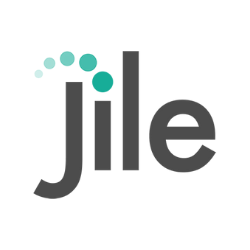The Need for Agile Portfolio Management in a Fast-Evolving World

The business landscape is fast evolving, and in order to better manage rapidly changing requirements and goals, organizations have to be flexible and adaptable. This can only be accomplished through Agile portfolio planning. Companies with an agile work culture will be able to respond to customer needs quickly, embrace technological changes, and remain dynamic at all times.
But what exactly is Agile portfolio planning? Why do we need agile portfolio management, and what are the advantages? Stay tuned.
What is Agile Portfolio Management?
Agile portfolio management (APM) is simply an approach or a process in which, unlike traditional portfolio management, organizations emphasize dynamic development processes and use a lean planning process where products or activities are prioritized based on the value they may create for the business or the customers.
In other words, agile portfolio management adheres to agile principles when it comes to defining how the organization will identify, prioritize, organize, and manage its resources, teams, and work. And in order to achieve this level of agility at work, all levels and teams within the organization – from the project team to the finance team, to the execution team, to the developing team – are tightly knitted. Each team's progress will be shared in real-time across the board.
Why do we need Agile Portfolio Planning?
Organizations need agile portfolio management for a variety of reasons. Some of them are listed below:
- Agile portfolio management assists businesses in scaling and meeting their evolving demands
- The approach also enables businesses to prioritize products or work strategically based on their value
- It also improves team communication and fosters collaboration to achieve larger goals.
- Agile portfolio management (APM) also assists organizations in making efficient resource allocation decisions. It will keep resources from leaking out.
- Agile portfolio planning also helps teams anticipate performance issues and implement necessary measures on time.

For all these reasons, businesses should incorporate agile portfolio management. In fact, several surveys and studies on Agile organizations have confirmed all of these benefits. For example, according to a McKinsey study, 93 % of business units that had fully adopted an agile model prior to the COVID-19 crisis, outperformed those that had not.
Benefits of Agile Portfolio Management
Agile portfolio planning benefits include value-focused product development, lean budget, iterative releases, strategic alignment, better visibility, efficient resource management, and higher customer satisfaction. Let's take a quick look at each of these advantages.
Strategic Alignment: Agile portfolio management will ensure that all the teams work toward the same goal and prioritize tasks that are more valuable to the organization or the customers. Keeping your work in line with the goals of the organization will eventually help you achieve your goals more quickly and efficiently.
Lean Budget: A lean budget is a financial approach or set of practices that aim to increase output while reducing overhead and project costs. In addition to these benefits, lean budgeting will foster growth and innovation in your teams and the organization.
Iterative Releases: Another significant advantage of Agile portfolio management is iterative releases. This will allow you to quickly incorporate feedback from teams and customers into the product, maximizing the value of each release.
Efficient Resource Management: Thanks to lean budgeting, each project or product release is prioritized based on its business value. This means that with crystal-clear requirements defined at the beginning of a project, management will be able to allocate resources effectively while also preventing any future resource waste.
Better Visibility: Agile portfolio management (APM) also contributes to greater visibility. Since the approach employs purpose-built applications that generate key metrics, organizations will have better visibility into project progress. Ultimately, with increased visibility and improved reporting, organizations can drive more value from their portfolio.
Higher Client Satisfaction: In addition to helping organizations in terms of finance, Agile portfolio management also assists businesses in improving customer satisfaction. As iterative releases allow organizations to quickly address and incorporate client requirements, it results in higher client satisfaction.
These are the six most important advantages of Agile portfolio planning. Let us now proceed to the final leg of this blog to learn how to implement agile portfolio management.
5 Steps to implement Agile Portfolio Management in your organization
The five major steps to implementing Agile portfolio management are as follows:
Strategic Theme Planning
At this stage of agile portfolio management, the organization's business strategy is aligned with the project portfolio. Top management and other departments analyze the various inputs to create strategic themes centered on business values. These strategic themes will eventually influence the entire portfolio strategy.
Breakdown the OKRs
The second stage of Agile portfolio management involves converting strategic themes into portfolio objectives while keeping the business OKRs (Objectives and Key Results) in mind. These are typically qualitative goals that are simple to understand and output-focused. The key results determine whether the objectives have been met.
Roadmap Design
At this point in Agile portfolio management (APM), the project is broken down into value-based small tasks known as epics. Each task is then prioritized based on time, risk, opportunity, and other factors. Besides that, specific milestones are set throughout the roadmap to measure progress and create learning loops.
Value Generation
The ultimate goal at this stage is to deliver value as predicted in the roadmap. To ensure that teams deliver value to the various value streams, periodic reviews are carried out. This review process aims to manage portfolio priorities and dependencies to avoid bottlenecks in a project's progress.
Real-time Monitoring
At last, portfolio monitoring is performed to gain real-time insights into the project's actual progress. This exercise will assist the organization in staying on track and making adjustments as needed.
This stage also assesses whether or not each team is doing the right things in the right way. Moreover, portfolio dashboards are used to track various other metrics such as customer satisfaction, employee engagement, OKR progress, and value stream funding.
Conclusion
It is pretty apparent that organizations must value and implement agile planning in order to keep up with the rapidly changing business landscape. Implementing an agile portfolio in an organization can provide several benefits such as increased transparency, uncertainty management, improved performance visibility, efficient resource allocation, and more. Although embracing Agile portfolio management may be difficult for organizations, it is worth a shot given its need and benefits.
Thanks for subscribing to our latest blogs, thought leadership and other product updates!
Read our Privacy Notice to know more. You can opt-out of all communications anytime.

